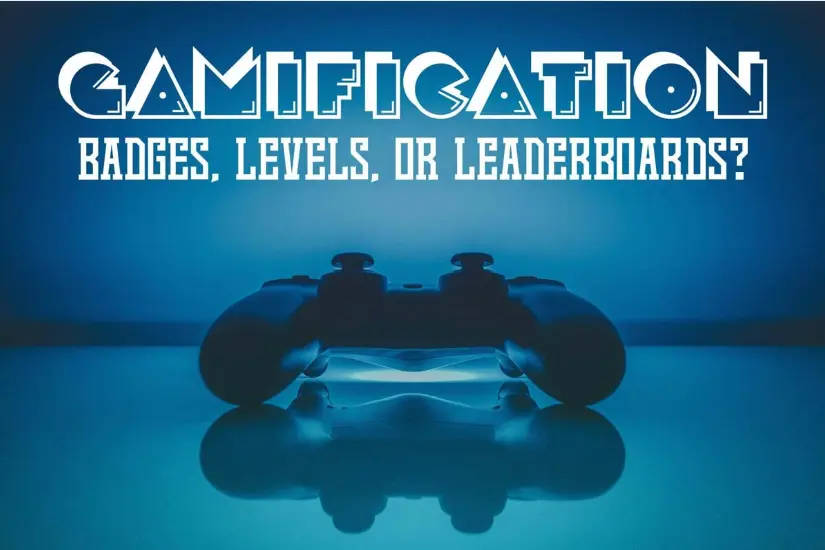Gamification is a buzzword you have undoubtedly encountered. The novel concept of taking something that is intrinsically fun and forming it around a learning exercise is an incredible notion that really invigorates the field of corporate learning and development. But anything new tends to lead to a lot of questions and with those develop a few barriers of entry that the industry must overcome. Over the coming weeks, I’ll investigate the answers to questions such as: does it really work? How does it work? What method should my organization choose? Should my organization even use it? And most importantly, will it actually yield better results in my talent pool?
In order to truly approach these questions, we must first understand what gamification really is and how it motivates us to complete learnings. To qualify, I will address what makes me uniquely qualified to approach this topic. When I was a child, I had difficulty with a math class, and an obsession with baseball cards; my father, saw this as an opportunity. As a capable programmer, he dusted off an old Apple II and created a game. If I managed to answer all of my multiplication and division tables correctly, I could be incentivized by the reward of a pack of baseball cards. Back then I was truly amazed that accomplishing a task could lead to such a prize, but I was also intensely fixated on being precise and accomplishing the task at the speed of the computer, that the process truly left a lasting impression on me.
To me, a self-proclaimed, “modern chic geek”, I think of the hours I have wasted playing games at home and what I was really accomplishing. What motivated me to keep playing when I was stuck in a level? What pushed me to do the same thing over and over again to obtain a silly achievement next to my username? Why did I need to have the highest score possible in the multiplayer game when I was just hanging out with my closest friends? Thinking of traditional video games and their value proposition is the best method for truly understanding the value of gamification. What motivated me was my inner drive for accomplishments and my competitive nature. Good gamification addresses that inner drive in 3 ways:
Badging
Gyrus is quite a fan of this approach, as we’ve opted to include Mozilla OpenBadges integration in our GyrusAim product. Badging is an online representation of an earned skill, allowing you to share your skills and interests with the world in a visual manner. This is most likened in the video game world with achievements, which are rewarded for doing something very difficult in a game, playing the game for so many hours, or repeating a process enough that the designers have previously designated as significant. In the video game world, these emblems are proudly emblazoned in players’ online user profiles, and to the hardcore gamers are prideful reminders of time spent in the digital world and accomplishments their friends and cohorts were unable to achieve. Badges motivate users by defining a clearly obtainable goal, one that if achieved can boost an internal resume, as well as show smooth progression within an organization.
Leveling
In the gamified world, there are games just like World of Warcraft and Diablo. Games in which character levels are clearly defined and are the motivation for continued use. Skills are preset by the instructor within a level, and once the student obtains said skills or enough experience, they can level-up their character and move on to the next; often more difficult level ahead. In modern games, levels are often disguised within storylines. Once you accomplish something, you must talk with someone else within the digital land to obtain more experience and designate your next course of action in the environment. This allows for the opportunity of sub-tasks and additional skill-building exercises to prepare you for the next big event your character will be faced with. This particular environment best motivates people who are enamored with structure and offers a quality foundational learning approach when compared to the training industry.
Leaderboards
Leaderboards are my personal favorite. As a kid, I remember going to a local arcade and dropping some serious quarters in games just because the 3 initials on the screen before the scrolling demo were not my own. To this day, if I wander into a place and Galaga is present, there’s a good chance I’m not only going to play it, I’m going to send out a social media blast and call for challengers. In training, some skills can be quantified into scoring with a repeatable process. Imagine the bragging rights you would have if you were the official king of the office! However, this often manifests in the training environment as a social routine and is paired with badges. “Did you see so and so on the third floor? He has 300 Badges!!!” and, “I thought I was doing well with just my 49.”
Regardless of method, people are motivated by different means. The goal of gamification is to present an environment conducive to learning unlike any previously experienced. If learning is fun, the odds of retention are most likely higher than a dry instruction or eLearning piece designed specifically for term learning and processes. Think back on your best classes in school or in business; what stands out the most? Thank you for reading and I hope you’ll continue to join me as I further address the field of gamification.









